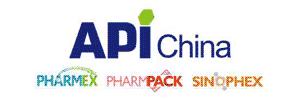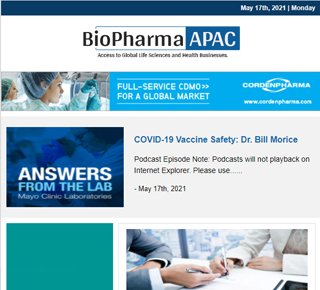Streamlining Biologics QC: How Waters’ Empower-MALS Integration Is Reshaping Analytical Workflows
16 May 2025 | Friday | Interaction

Waters Corporation is tackling the complexity of biologics quality control with the integration of Multi-Angle Light Scattering (MALS) into its Empower™ Chromatography Data Software. In this exclusive interview with BioPharma APAC, David Curtin, Vice President & General Manager of the Biologics Business at Waters, explains how this unified solution eliminates fragmented workflows, enhances regulatory readiness, and empowers labs—large and small—to detect aggregates and high molecular weight species with greater speed, confidence, and compliance.
What specific challenges in traditional QC workflows for biologics does this Empower-MALS integration address most effectively?
Traditionally, GXP and QC labs perform SEC-HPLC and SEC-MALS experiments separately because there isn’t one single software that can handle both analyses. This means operators need to be trained on two different software systems, perform twice as many experiments, and then manually combine the results.
EmpowerTM Software with Multi-Angle Light Scattering (MALS) integration cuts down the workflow because users only need to be trained on a single platform, perform the experiment once, and only one system requires validation. Empower software with MALS integration makes traditional QC workflows more efficient, reduces manual processes, and enhances traceability. In addition to the operational efficiency it affords, it also reduces an organizational risk by minimizing the possibility of manual transcription errors or omissions.
How does this integration affect regulatory submissions in regions with varying compliance frameworks such as the US, EU, and Asia-Pacific?
MALS satisfies several criteria that are already required for the safe release of biotherapeutics. For instance, MALS can be applied to satisfy testing for the FDA’s Q6B specifications and Q11 development and manufacture of drug substances guidelines, which are both ICH (International Council for Harmonisation) documents, not solely FDA documents. ICH guidelines are international standards developed collaboratively multiple regulatory bodies such as the FDA, EMA, PMDA and others.
Are there specific examples or case studies where this integration has already shortened validation timelines or improved QC outcomes for your clients?
So far, we have heard a few comments during our demos of reduced number of “clicks” to get a result and report. One of the most compelling pieces of time savings is the validation time saved. Typically, it takes a company around six months to validate software in a GMP environment. This integration will deliver both economic and operational efficiencies by cutting time because only one, well-known and more easily qualified software is required.
How does Waters plan to support training and adoption among CDMOs and smaller biopharma players that may lack in-house MALS expertise?
SEC-MALS offers a familiar workflow for those accustomed to traditional SEC-HPLC methods. With the added support and training provided by Waters, adopting the technology becomes even more straightforward.
For those new to MALS who want in-depth training, our Light Scattering University (LSU) offers comprehensive, hands-on courses held monthly at our facilities in the United States and Germany. Additionally, our global team of service professionals provides onsite and online training through our service support plans, including subject matter experts based in China, Singapore, and Japan. For added flexibility, live remote-learning sessions are also available each spring and fall, offered in two different time zones.
Could you elaborate on how the integration with DAWN™, miniDAWN™, and Optilab™ enhances the detection of high molecular weight species and aggregates in biotherapeutics?
Light scattering detectors, such as the DAWN and miniDAWN MALS instruments, have increased sensitivity for larger particles, making them especially valuable for detecting oligomeric states, aggregates, and high molecular weight species (HMWS) that UV detection alone may miss. Furthermore, integrating the Optilab differential refractive index (dRI) detector simplifies protein concentration measurements without requiring extinction coefficient that varies by constructs. This means laboratories working with different protein constructs can use the same method without adjusting parameters for each species. This integrated approach improves confidence in identifying and characterizing aggregates and other HMWS.
Looking ahead, how does this innovation align with Waters’ broader roadmap for digital transformation in biopharma analytics?
Empower Software serves as the hub for all the majority of regulated data and instruments in QC labs. The integration of advanced analytical technologies, like MALS into the Empower CDS ecosystem, underscores Waters commitment to supporting customers in their need to generate high quality data with high levels of regulatory compliance.
Most Read
- Top 25 Biotech & Biopharma Leaders in Sustainable Innovation, 2025
- China’s Biopharma Dealmaking Surges in H1 2025, Driven by Record Licensing and Oncology Focus
- Chikungunya in China: How a “Forgotten” Arbovirus Found the Perfect Storm
- How Innovation Gaps in Biopharma Raise New Safety Concerns
- Smart Implants and the Future of Musculoskeletal Injury Treatment
- How Ethical Gaps in Psychiatry Could Undermine Biopharma Progress
- The Evolving Landscape of Women’s Health Innovation in the Asia-Pacific
- Using NLP-Driven Decision Support in Emergency Health Assistance
- Taiwan Steps Into the Global Spotlight With a New Cancer Therapy
- The Role of Unique Device Identification (UDI) in Tracing Medical Device Safety
- The Importance of a Patient’s Mental Health During Clinical Trials
Bio Jobs
- The State of Biotech and Life Science Jobs in Asia Pacific – 2025
- Avantor’s New CEO Ligner Aims to Unlock Global Potential and Deliver Shareholder Value
- AstraZeneca Commits $50 Billion to U.S. Expansion by 2030 in Biggest-Ever Global Investment
- Thermo Fisher, SAMRC, and South Africa’s Department of Science and Innovation Launch CATIR to Nurture Next-Gen Scientists
- Cube Biotech Appoints Former Sartorius CEO Dr. Joachim Kreuzburg to Board of Directors
- FDA’s AI Transition Marks a Turning Point in Drug Review: Industry Faces Pressure to Adapt Amid 20% Workforce Cut
- WuXi XDC Completes Mechanical Build of Singapore Bioconjugate Manufacturing Hub
News
Editor Picks










